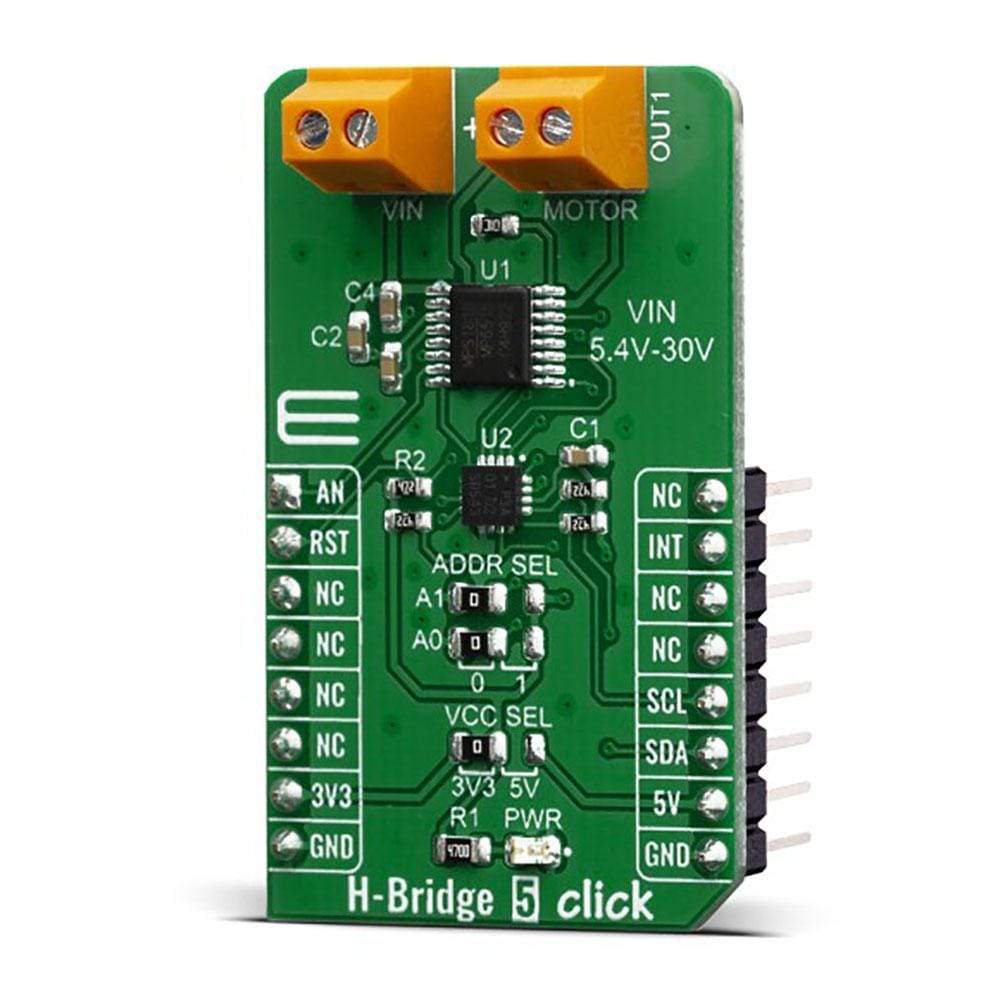
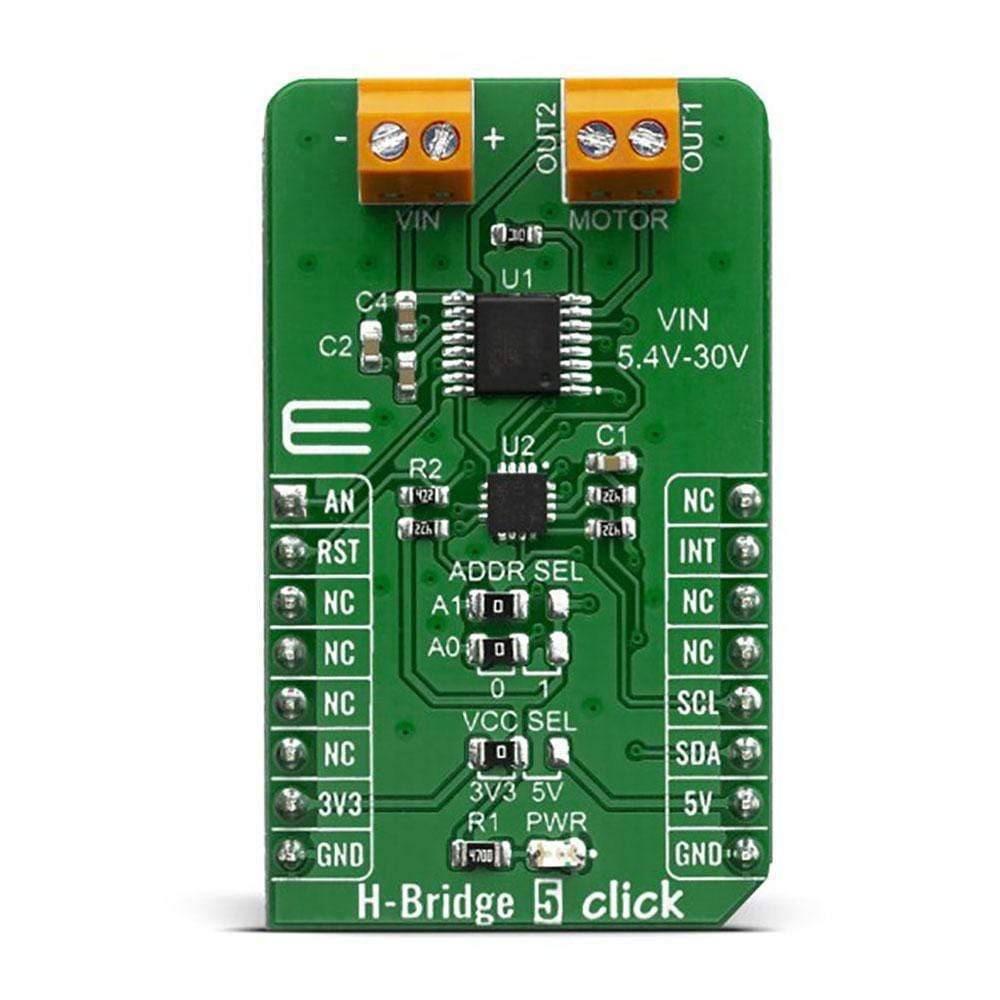
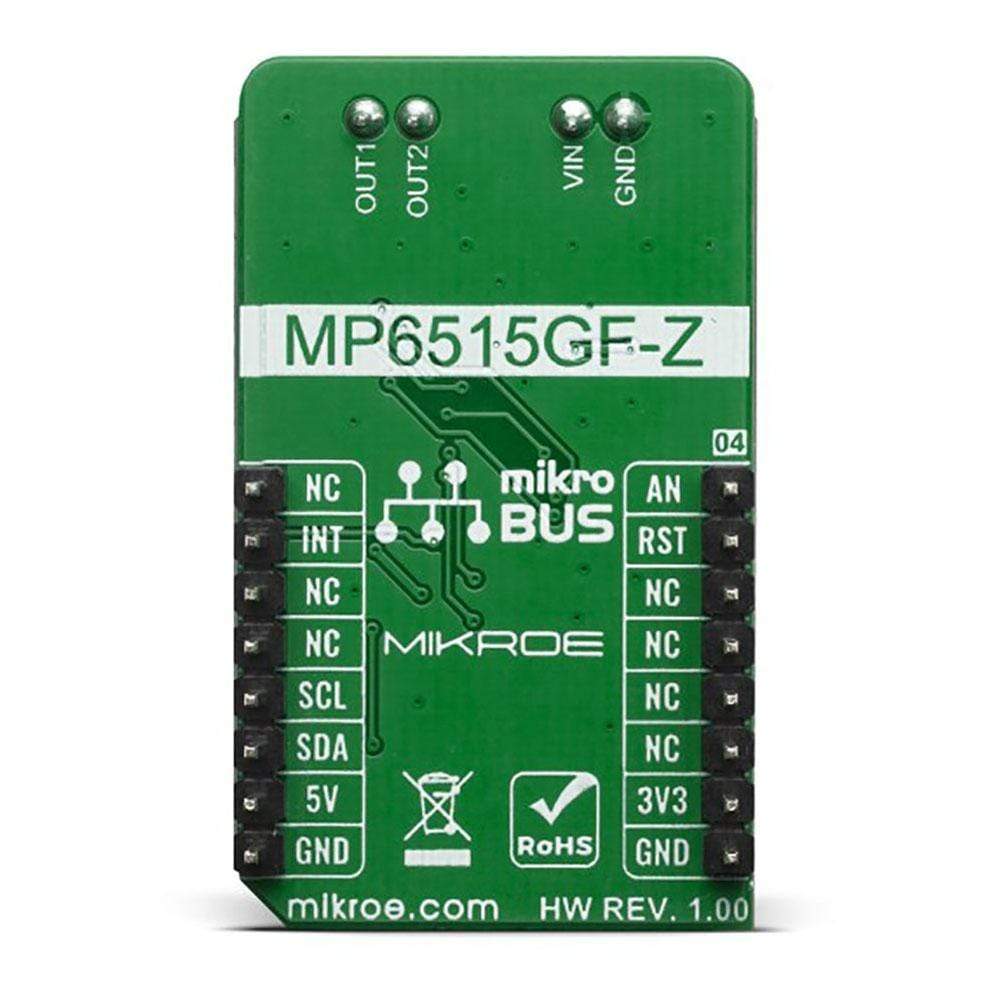
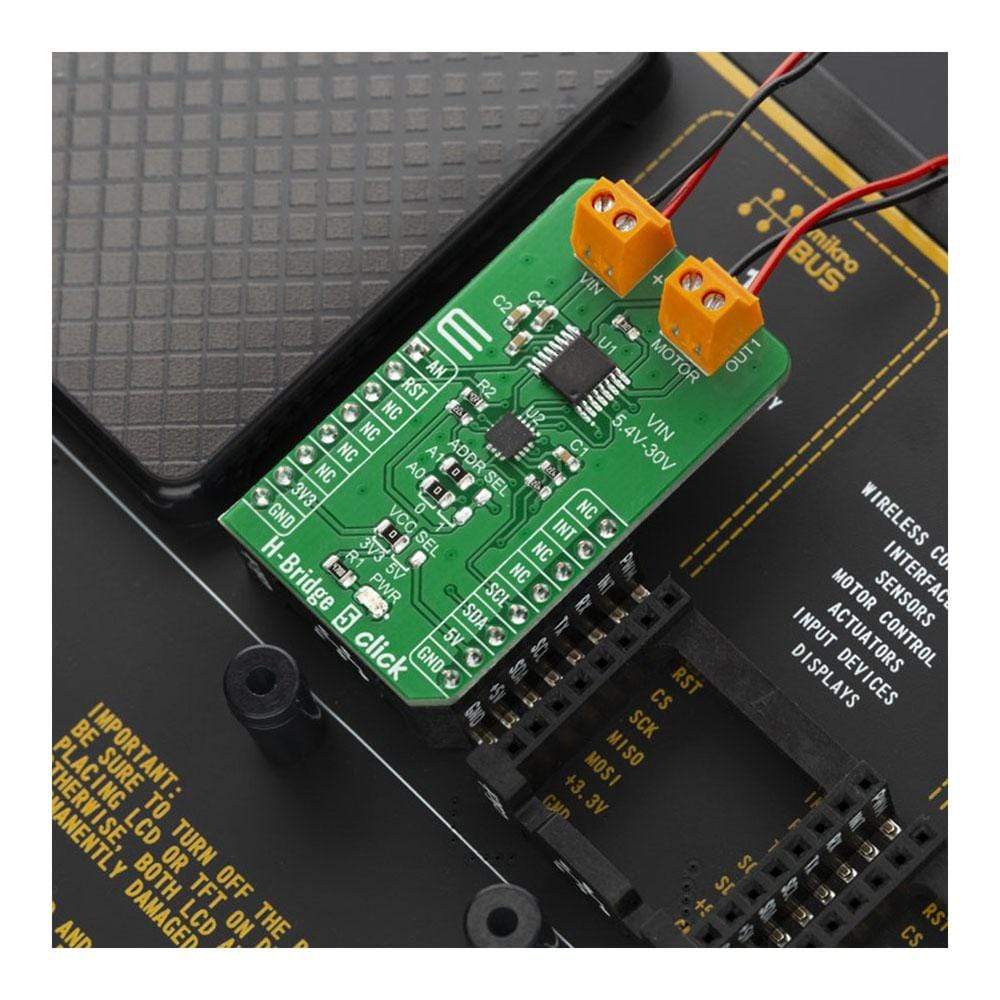
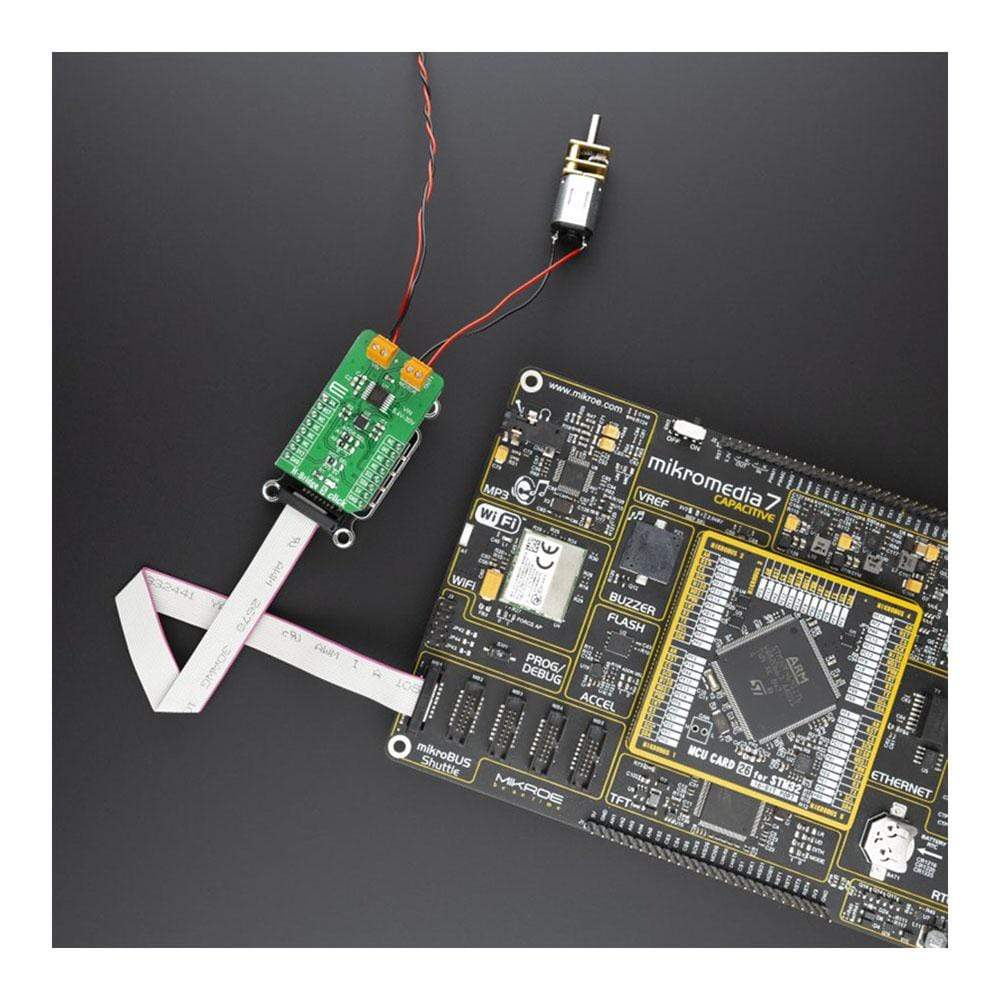
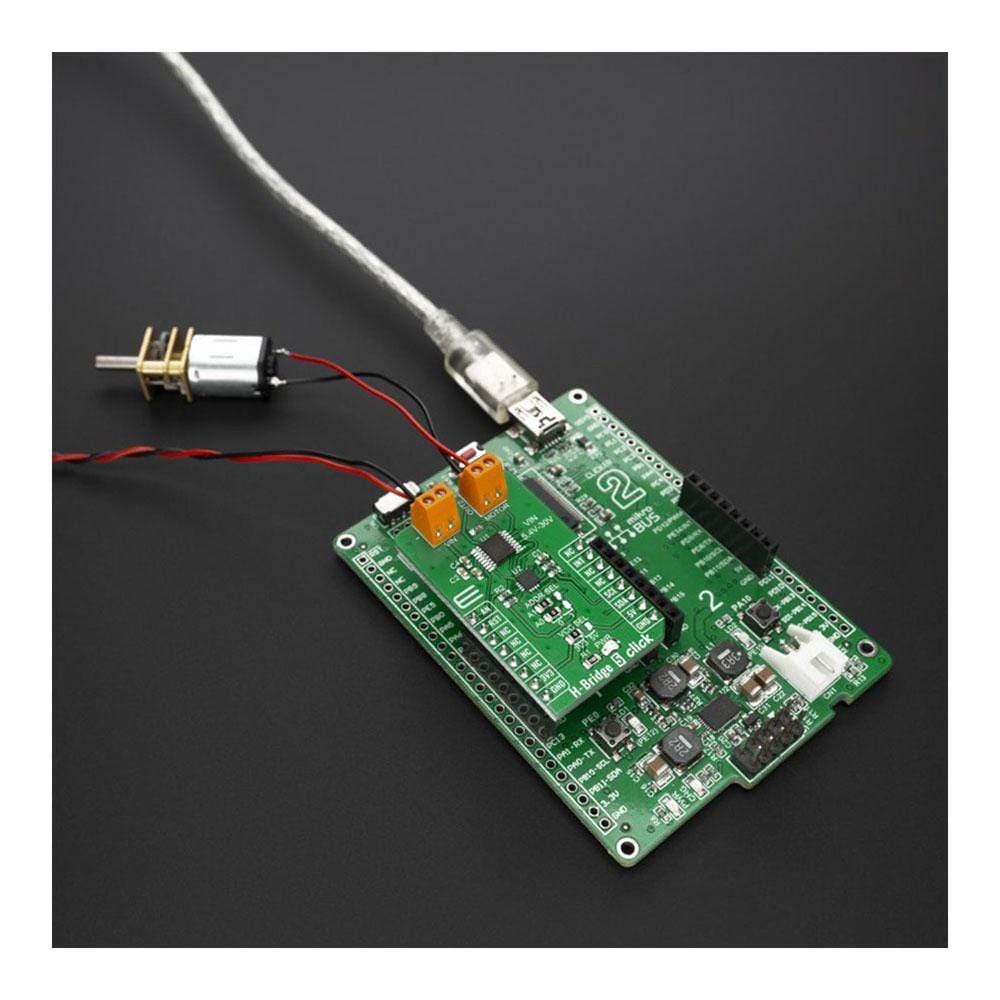
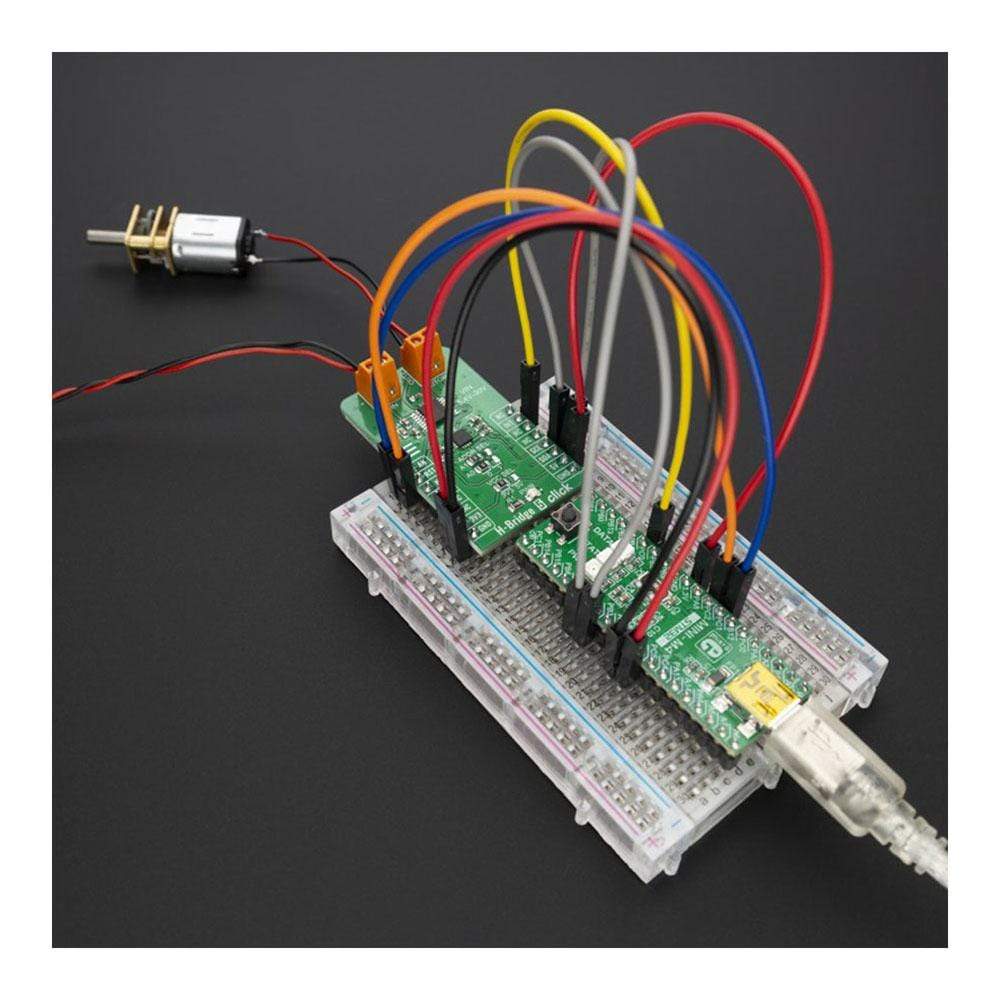
Overview
The H-Bridge 5 Click Board™ is designed for control DC motors and inductive loads. This Click Board™ contains the MP6515GF-Z, an H-bridge motor driver from MPS, It features a Full H-Bridge driver with Internal safety features include over-current protection, input over-voltage protection, under-voltage lockout (UVLO), and thermal shutdown. This Click Board™ also contains the PCA9538A, a low-voltage 8-bit General Purpose Input/Output (GPIO) expander.
The H-Bridge 5 Click Board™ can be used for Solenoid Drivers and DC Brush Motor drivers.
Downloads
Das H-Bridge 5 Click Board™ ist für die Steuerung von Gleichstrommotoren und induktiven Lasten konzipiert. Dieses Click Board™ enthält den MP6515GF-Z, einen H-Brücken-Motortreiber von MPS. Es verfügt über einen vollständigen H-Brücken-Treiber mit internen Sicherheitsfunktionen wie Überstromschutz, Eingangsüberspannungsschutz, Unterspannungssperre (UVLO) und thermische Abschaltung. Dieses Click Board™ enthält außerdem den PCA9538A, einen Niederspannungs-8-Bit-GPIO-Expander (General Purpose Input/Output).
Das H-Bridge 5 Click Board™ kann für Magnetspulentreiber und DC-Bürstenmotortreiber verwendet werden.
| General Information | |
|---|---|
Part Number (SKU) |
MIKROE-3854
|
Manufacturer |
|
| Physical and Mechanical | |
Weight |
0.02 kg
|
| Other | |
Country of Origin |
|
HS Code Customs Tariff code
|
|
EAN |
8606018719488
|
Warranty |
|
Frequently Asked Questions
Have a Question?
Be the first to ask a question about this.







